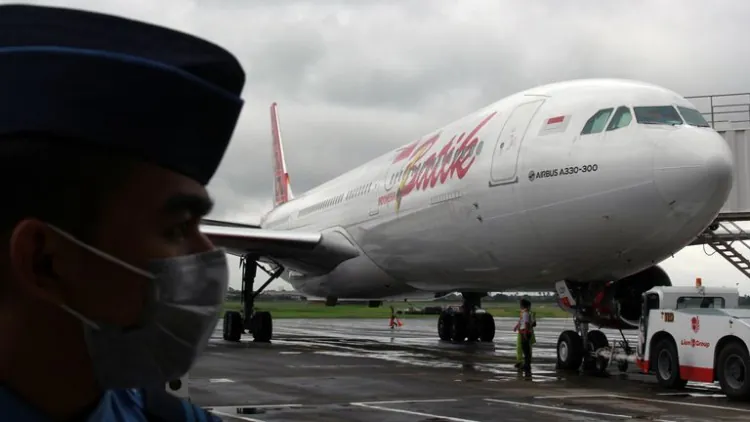Pilots Asleep at the Wheel: Close Call on Batik Air Flight
Two pilots fell asleep during a Batik Air flight in Indonesia, veering off course for 28 minutes before safely landing

-
Introduction
- Overview of the incident on a Batik Air flight
- The significance of pilot fatigue in aviation safety
-
The Incident Detailed
- Description of the flight path from Haluoleo International Airport to Soekarno-Hatta Airport
- Circumstances leading to both pilots falling asleep
- Actions taken upon waking
-
Pilot Fatigue: A Growing Concern
- The impact of personal circumstances on the younger pilot
- Statistics on pilot fatigue and its implications for flight safety
-
Regulatory Response and Safety Measures
- Indonesia's National Transportation Safety Committee's (KNKT) investigation and findings
- Global standards for managing pilot fatigue
-
Public and Industry Reaction
- Reactions from the aviation industry and safety experts
- The role of public perception in aviation safety enhancements
-
Looking Ahead: Ensuring Safer Skies
- Steps being taken by airlines and regulators to prevent similar incidents
- The importance of continued vigilance and improvement in aviation safety measures
-
FAQs
- What is pilot fatigue and why is it dangerous?
- How are airlines addressing the issue of pilot fatigue?
- Can technology help prevent incidents caused by pilot fatigue?
-
Conclusion
- Recap of the Batik Air incident's implications for aviation safety
- Encouragement for ongoing dialogue and action on pilot fatigue
Introduction
In a harrowing incident that underscores the critical issue of pilot fatigue, two pilots aboard a Batik Air flight in Indonesia succumbed to sleep, veering off the intended flight path for an alarming 28 minutes. This event, which took place on January 25, 2024, from Haluoleo International Airport to Soekarno-Hatta Airport, serves as a stark reminder of the potential risks associated with fatigue in the aviation sector.
The Incident Detailed
The flight, carrying 153 passengers and four flight attendants, was on its return leg to Jakarta when the pilots, aged 28 and 32, inadvertently fell asleep at an altitude of 36,000 feet. The younger pilot, grappling with recent life changes including the birth of twins and a house move, had struggled with sleep in the days leading up to the flight. Despite these personal challenges, the flight's initial leg proceeded without incident, only for both pilots to fall asleep during the critical phase of their journey, missing their flight path.
Pilot Fatigue: A Growing Concern
The incident shines a light on the pervasive issue of pilot fatigue, which can be exacerbated by personal stressors. Pilot fatigue is recognized as a significant hazard in the aviation industry, with the potential to impair judgment, decision-making, and reaction times. This Batik Air incident illustrates how quickly safety can be compromised, even by seasoned professionals.
Regulatory Response and Safety Measures
Following the incident, Indonesia's National Transportation Safety Committee (KNKT) launched an investigation, highlighting the need for stringent measures to combat pilot fatigue. The aviation industry globally is grappling with this challenge, seeking to implement standards that ensure pilots are well-rested and alert throughout their flights.
Public and Industry Reaction
The incident has sparked widespread concern among aviation safety experts and the public alike, leading to calls for enhanced safety protocols and better support systems for pilots dealing with personal stressors. The aviation community is now examining how best to balance the demands of the profession with the well-being of its pilots.
Looking Ahead: Ensuring Safer Skies
Efforts are underway across the aviation sector to strengthen policies on rest periods, work hours, and mental health support for pilots. By fostering an environment that prioritizes safety and well-being, the industry aims to prevent future incidents and ensure the skies remain safe for everyone.
FAQs
-
What is pilot fatigue and why is it dangerous? Pilot fatigue refers to a state of exhaustion that can significantly impair a pilot's abilities, posing serious safety risks.
-
How are airlines addressing the issue of pilot fatigue? Airlines are adopting stricter rest policies, promoting mental health resources, and leveraging technology to monitor pilot alertness.
-
Can technology help prevent incidents caused by pilot fatigue? Yes, advancements in cockpit technology and alertness monitoring systems are being explored as potential tools to combat fatigue-related risks.
Conclusion
The Batik Air incident is a wake-up call to the aviation industry, emphasizing the urgent need for concerted efforts to address pilot fatigue. Through collaboration, innovation, and a commitment to safety, the goal of safer skies for all remains within reach.
What's Your Reaction?






















